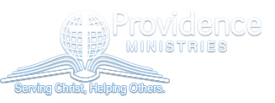Prescription Drug Abuse
Prescription drug abuse often starts due to an ignorance of their highly addictive nature and a lack of taking them as prescribed. It often starts in a person’s teenage years or young adult years because many young people don’t understand that abusing these types of substances can quickly become as bad or even worse than street drugs.
Some of the more highly addictive medicinal substances that carry a high potential for abuse include opiate painkillers such as hydrocodone, depressants such as Vicodin and stimulants such as Ritalin and Adderall.
These drugs can be abused and become addictive even to patients who have legitimate prescriptions from the physician.
History of Prescription Drug Abuse & Addiction
Prescription drug addiction dates back many years to when people used to abuse laudanum (mixture of alcohol and opium.)
Normally, this drug was a remedy for diarrhea, coughing, anxiety, sleeplessness and pain. It reached the addictive stage when women who had problems with emotional issues, menstrual cramps, pregnancy and childbirth could seek for an addictive substance from doctors and get it—as they were not allowed to be seen in bars drinking.
Then came morphine, which was used as a painkiller by American civil war fighters in 1827. It was addictive, but this was overlooked. The addiction from morphine was to be counteracted by the use of heroin.
In those days, most of these drugs were under patent law protection, so their ingredients remained secret despite them being addictive.
Since taking these kind of drugs was allowed, people did not care about the potency or frequency of drugs, never minded exceeding the recommended instructions, and this resulted in them becoming a drug addict.
Their bodies became tolerant to these drugs and hence they had to take a higher dosage to feel the desired results.
Statistics of Prescription Drug Addiction
According to a survey, the biggest percentage of deaths in the USA from drug overdose is due to prescription drug addiction. In 2005 their were 22,400 drug overdose deaths in the USA, of which 38.2% were as a result of opioid painkillers overdose.
According to the Drug Enforcement Administration, in 2007, more than a thousand people died in the US from the abuse of fentanyl, a painkiller.
Medical Risks of Prolonged Prescription Drug Abuse
The set of risks one faces from prolonged abuse of prescription medicines can differ from one drug to another but, across the board, here are some of the risks.
- Drug tolerance making one need more and more of a drug to feel its effects and becoming dependent.
- Damage to and failure of such organs as liver and kidney.
- Psychological cravings and addiction.
- Decreased cognitive function.
- Mental health symptoms such as depression and paranoia.
- Withdrawal symptoms in the absence of the drug. Such symptoms include: nausea, vomiting, insomnia, sweating, shaking, nervousness, depression and uncontrolled leg movement.
Social Risks of Prolonged Prescription Drug Abuse
- Accidents can occur when the drugs interfere with your driving due to impaired thinking and judgment.
- Poor performance in school whereby the “once mood changer” and “anxiety chaser drugs” become addictive and give you opposite results.
- Stealing prescriptions from friends and family whenever one needs to fulfill the craving.
- Dropping out of school due to the frustrations that come with drug abuse and poor academic performance.
- Poor performance at job and loss of the job.
- Putting you in legal troubles. For example being jailed for misusing drugs. The abuse of drugs can also increase the likelihood of committing crimes.
Treatment of Prescription Drug Addiction
Addiction to any illicit or prescribed drugs can be treated effectively, according to proven studies. Once the abused drug and the individual’s needs have been evaluated, treatment may incorporate components such as detoxification, counseling and addiction medicines, usually administered at drug and alcohol rehabs.
Patients of drug addiction may be helped to make a full recovery through behavioral and/or pharmacological treatment.
Behavioral treatments aim at stopping drug abuse and teaching the body to function without drugs, stop cravings, avoid situations luring to drug abuse and handle a relapse if it occurs. Behavioral treatments could involve individual and family counseling, cognitive therapies and contingency management for smooth recovery.
Pharmacological treatments aim at counteracting the effects of the drug on the brain, which helps a lot with withdrawal symptoms.
For the best results, it is important that a patient gets a combined treatment approach whereby both behavioral and pharmacological treatments are applied.


